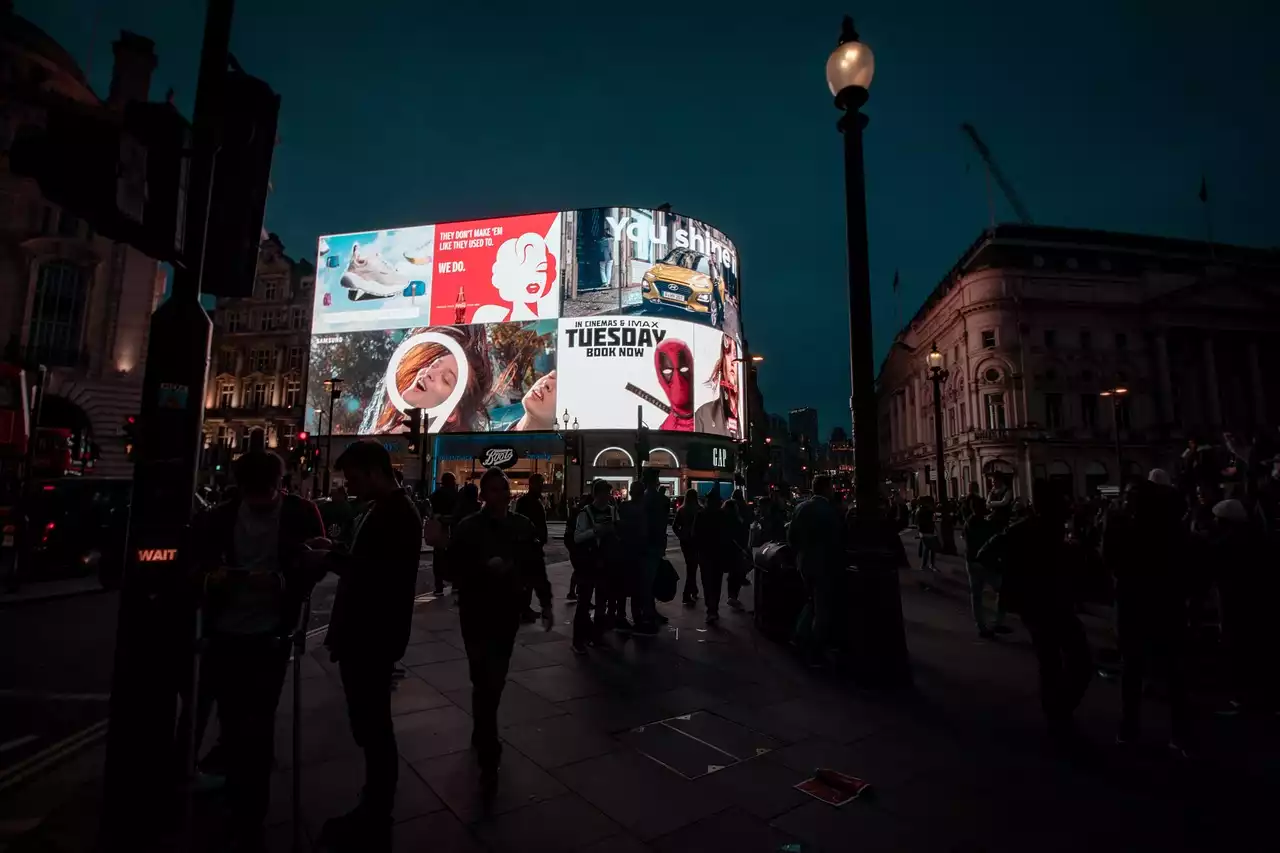The Importance of Effective In-App Ads
In-app ads have become an essential part of mobile advertising. They are an effective way to reach a large audience, increase brand awareness, and drive app installs or purchases. However, not all in-app ads are created equal. Poorly designed ads can be intrusive, annoying, and even detrimental to the user experience. In fact, studies have shown that 54% of users are willing to pay for an ad-free app experience.
Effective in-app ads, on the other hand, can enhance the user experience and drive engagement. They can be used to educate users about new products or services, promote app features, and increase user loyalty. In-app ads can also provide valuable data and insights about user preferences and behavior, which can be used to improve ad targeting and personalization.
To ensure that your in-app ads are effective, it's important to understand your target audience and design ads that are visually appealing, engaging, and relevant to their interests and needs.
Understanding Your Target Audience
Before you start designing your in-app ads, it's important to understand your target audience. Who are they? What are their interests and needs? What motivates them to take action? The more you know about your audience, the better you can tailor your ads to their preferences and behavior.
One way to gather insights about your target audience is to conduct user research. You can use surveys, focus groups, or interviews to gather feedback about your app and your ads. You can also use analytics tools to track user behavior, such as app usage, click-through rates, and conversion rates.
Another way to understand your audience is to create user personas. User personas are fictional characters that represent your target audience. They can help you visualize your audience's needs, goals, and behavior, and create ads that resonate with them.
Once you have a clear understanding of your target audience, you can start designing ad creatives that grab their attention and drive action.
Designing Ad Creatives That Grab Attention
The design of your in-app ads is crucial to their effectiveness. Users are bombarded with ads every day, so you need to make sure that your ads stand out from the crowd. Here are some tips for designing ad creatives that grab attention:
- Use eye-catching visuals: Images and videos are more engaging than text alone. Use high-quality visuals that are relevant to your ad's message and appeal to your target audience.
- Use contrast: Use contrasting colors to make your ads stand out. For example, use a bright color for your call-to-action button to draw attention to it.
- Keep it simple: Don't overload your ad with too much information. Keep your message clear and concise, and use simple, easy-to-read fonts.
- Be consistent: Use consistent branding across all your ads. Use the same colors, fonts, and messaging to help users recognize your brand.
- Use animation: Animated ads are more engaging than static ads. Use animations to draw attention to your ad and make it more memorable.
By using these design tips, you can create visually appealing ads that grab users' attention and drive conversions.
Crafting Compelling Ad Copy
In addition to the design of your ad, the copy is also important. Your ad copy should be compelling, persuasive, and relevant to your target audience. Here are some tips for crafting ad copy that drives action:
- Highlight benefits: Focus on the benefits that your product or service provides, rather than just its features. For example, instead of saying "Our app has great features," say "Our app makes your life easier."
- Use persuasive language: Use language that motivates users to take action, such as "Get started now" or "Limited time offer."
- Be concise: Keep your message short and to the point. Use simple, easy-to-understand language.
- Use social proof: Use customer testimonials or social proof to show that your product or service is trusted by others.
- Be relevant: Tailor your ad copy to your target audience's interests and needs. Use language that resonates with them and speaks to their pain points.
By using these copywriting tips, you can create ads that are not only visually appealing but also compelling and persuasive.
Choosing the Right Ad Format
There are several ad formats available for in-app advertising, including banners, interstitials, native ads, and rewarded ads. Each format has its own benefits and drawbacks, depending on your goals and target audience.
- Banners: Banners are the most common type of in-app ad. They are small ads that appear at the top or bottom of the screen. Banners are less intrusive than other ad formats but are also less effective.
- Interstitials: Interstitials are full-screen ads that appear between app screens. They are more intrusive than banners but are also more effective at driving conversions.
- Native ads: Native ads are ads that are designed to look and feel like the app's content. They are less disruptive than other ad formats and can blend seamlessly into the user's experience.
- Rewarded ads: Rewarded ads are ads that offer users a reward, such as in-app currency or extra lives, in exchange for watching the ad. They are highly effective at driving engagement and can increase user loyalty.
When choosing the right ad format, consider your goals, target audience, and user experience. You want to choose an ad format that is effective at driving conversions but also enhances the user experience.
Placement and Frequency of In-App Ads
The placement and frequency of your in-app ads are also important factors to consider. Too many ads can be overwhelming and intrusive, while too few ads may not be effective at driving conversions. Here are some tips for placing and frequency of in-app ads:
- Don't overload your app with ads: Too many ads can be overwhelming and lead to app uninstalls. Use ads strategically and sparingly.
- Place ads in natural breaks: Place ads in natural breaks, such as between levels in a game or during a pause in a video.
- Test ad placement: Test different ad placements to see which ones are most effective at driving conversions. You can use A/B testing to compare different ad placements and frequency.
- Be mindful of user experience: Always prioritize the user experience. Make sure your ads are not too disruptive or annoying.
By following these tips, you can optimize the placement and frequency of your in-app ads to drive conversions without sacrificing the user experience.
Measuring the Success of Your In-App Ads
To determine the effectiveness of your in-app ads, you need to measure their success. You can use analytics tools to track key metrics, such as click-through rates, conversion rates, and app installs. Here are some tips for measuring the success of your in-app ads:
- Set clear goals: Determine what you want to achieve with your in-app ads, such as increasing app installs or driving sales.
- Track key metrics: Use analytics tools to track key metrics, such as click-through rates, conversion rates, and app installs.
- Analyze the data: Use the data to identify trends, insights, and areas for improvement. Use the data to optimize your ad creatives, copy, and placement.
- Test and iterate: Continuously test and iterate your ads to improve their effectiveness over time.
By measuring the success of your in-app ads, you can optimize your campaigns and improve your ROI.
Common Mistakes to Avoid
When designing in-app ads, there are some common mistakes that you should avoid. Here are some of the most common mistakes:
- Poor design: Ads that are poorly designed or not visually appealing can be ineffective and even damaging to the user experience.
- Too many ads: Too many ads can be overwhelming and lead to app uninstalls.
- Irrelevant ads: Ads that are not relevant to the user's interests or needs can be ignored or even annoy users.
- Misleading ads: Ads that are misleading or deceptive can damage your brand's reputation and lead to user distrust.
- Lack of testing: Not testing your ads can lead to ineffective campaigns and wasted ad spend.
By avoiding these common mistakes, you can create in-app ads that are effective, engaging, and enhance the user experience.
Examples of Effective In-App Ads
To give you some inspiration, here are some examples of effective in-app ads:
- Airbnb: Airbnb uses native ads that blend seamlessly into the user's experience. The ads feature high-quality visuals and persuasive copy that highlights the benefits of using Airbnb.
- Headspace: Headspace uses rewarded ads that offer users free meditation sessions in exchange for watching the ad. The ads are highly effective at driving engagement and increasing user loyalty.
- Duolingo: Duolingo uses interstitials that appear between language lessons. The ads feature fun animations and persuasive copy that encourages users to upgrade to the premium version of the app.









